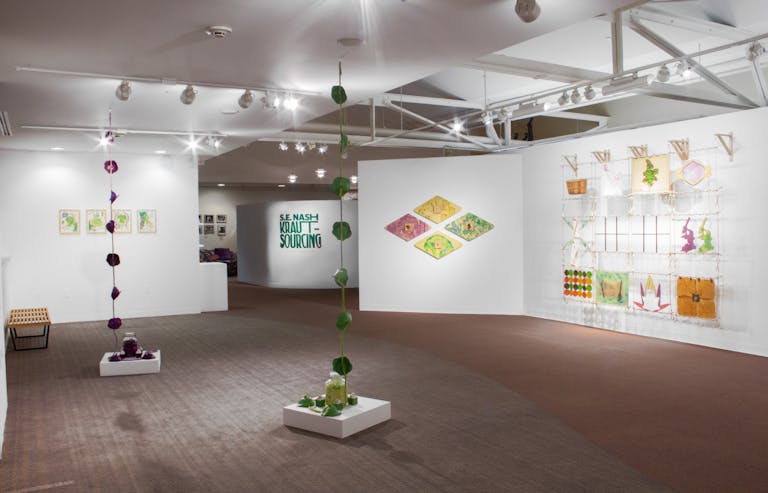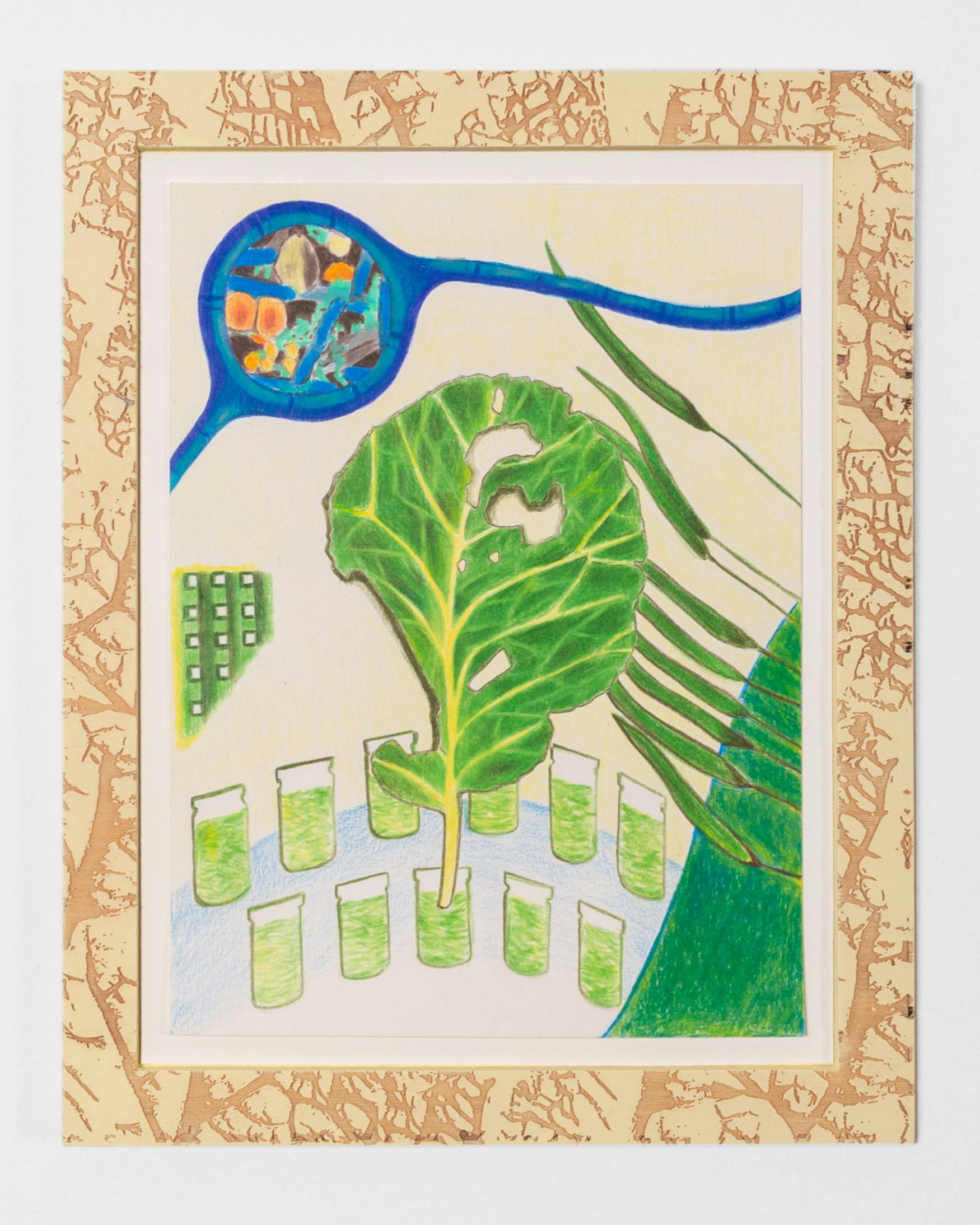Krautsourcing: socially engaged art
Art can be found in anything and everything. S.E. (Sean) Nash, a Kansas City-based artist, created an exhibition at the Women’s Studies Research Center called “Krautsourcing” to investigate the transcendental art of fermentation: a metabolic process during which enzymes produce chemical changes in organic substances. For “Krautsourcing,” Nash uses sauerkraut, or fermented cabbage, as the premier material of the artworks. Last Friday, I had the opportunity to speak over the phone with Nash to discuss the exhibition as well as the upcoming Lacto-Fermentation Workshop, which will be held at the Kniznick Gallery at the WSRC on Feb. 8.
Nash started working with food as a medium in 2014 and was inspired by the process of making a sourdough starter: “I found in making a sourdough starter this incredible process of watching fairly simple material — flour and water — start to come alive with bubbles and yeast all on its own, seemingly knowing, of course, that microbes involved were making that happen.”
When asked about what inspired him to work with food, Nash continued, “I just really wanted to bring a lot of interest I have in science and the fermentation process into what I do in my art.” Nash has created many shows dedicated to fermentation. For “Krautsourcing,” Nash received a dozen sauerkraut submissions for the opening night of the exhibit. Some were from local kraut producers, while other recipes were homemade or from friends. By crowdsourcing the kraut, the exhibit functions as a collective experience.

EMBODIED PRACTICE: Fermentation is a transformative practice that links to feminist practices of embodiment, self-care and queer practices.
“Krautsourcing” is a continuation of Nash’s exploration of the dynamic relationship between people and microbes. Because the art is made with sauerkraut, “Krautsourcing” differs from traditional art exhibitions in many ways. The artwork evolves in the gallery, so Nash must tend to its needs. “But,” Nash added, “I think it gives people the chance to experience that change over time. So part of the purpose of it is to have people go back and see something as it’s bubbling and changing color and undergoing the process of fermentation.” As a result, Nash uses clear vessels to display the sauerkraut as it ferments, giving the sculptures the quality of being alive and enriching the experience of the show.
At the upcoming Lacto-Fermentation workshop, aside from viewing the “Krautsourcing” exhibition, attendees can also expect a hands-on experience, led by Nash, making sauerkraut in groups. Furthermore, Nash will explain the lacto-fermentation process and his work with fermentation, as well as the intersectional and metaphorical aspects of fermentation, feminism in particular. The theme of the workshop, Nash explained, “highlights the experience of fermentation as an embodied practice, thinking about the kinds of metaphors that we can derive from fermentation as a transformative practice, and linking those to feminist practices of embodiment and self-care, and queer and trans practices.”
An important aspect of Nash’s experiences have to do with his transgender identity, which adds a gender element to his work. He added, “For me, as a transgender person, I think about fermentation as a parallel path to my experience with gender and having revelations about my gender experience in concert with working with fermented foods.” To him, “Krautsourcing” presents gender as a dynamic and living entity instead of being static and non-living.
Fermentation also serves as an exploration of the past and embodies the relationship of both food ancestry and family history. The ability of those microbes to transform food are wonderful in Nash’s eyes: “How did the species Brassica oleracea come to create all these different foods?” he wondered. He researched the types of food that came from Brassica oleracea over time, and thought about the plant’s transformation in terms of his own body and ancestry: “How do I know my family and my history through food?” Nash revealed that when his father’s mother escaped Nazi Germany, she rejected all German food, including sauerkraut. To Nash, an aspect of the show is learning family history through food: fermentation serves “as a way of recalling ancestry.”
“Krautsourcing” is an ontological, artistic, and scientific experience. The Lacto-Fermentation Workshop will be held at the WSRC on Feb. 8 at 1 p.m., and “Krautsourcing” will be available for viewing until Feb. 26.



Please note All comments are eligible for publication in The Justice.